By Stephen Living/DWR
Photos by Stephen Living/DWR
When we think about wildlife habitat, it becomes clear that habitat doesn’t mean the same thing for different species of wildlife. Different species have very different needs; what is great habitat for one species just won’t do for another. Some wildlife need vast areas, wandering over miles of terrain. Other species may spend their lives in a small patch of forest floor underneath leaves and logs. While the details may be different, each species of wildlife still needs some form of shelter. Shelter can be a place to escape from harsh weather, somewhere to hide from predators, or a secure place to raise young.
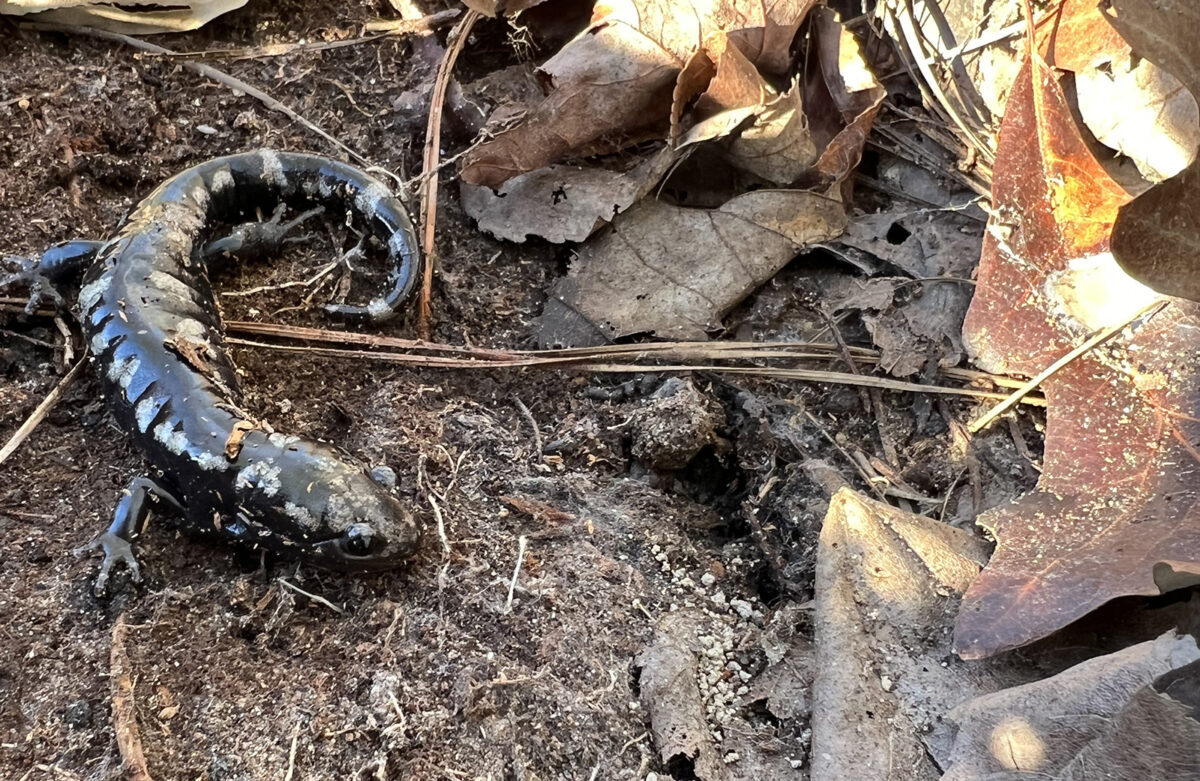
Shelter for a black bear might be a burrow or hollow tree where a female can spend the winter and give birth to her young. Shelter for an eastern toad might be as simple as an up-ended terracotta pot in a cool, shady spot in the garden where they can avoid the heat of the day. We can think about providing many different kinds of shelter, both natural and human made, in a Habitat at Home.
The vegetation around us provides great shelter for many species. The leaves, stems, and flowers in our gardens provide places for native insects and other small animals to hide, eat, grow, and reproduce. Leaving the stems of some of these standing through the seasons can help native bees overwinter and have places to lay eggs. Leaving the leaves provides habitat for pollinators and places for amphibians, reptiles, and small mammals. Making and maintaining a bee hotel can help provide for native bees.
Trees and shrubs are another valuable form of shelter. Many of our birds rely on these to find places to nest and to escape hot or cold weather. Evergreens can be especially valuable as they provide protection for cold winter winds and snow.
These woody plants keep providing shelter even when they’re not living. Standing dead wood or “snags” are an important source of shelter and habitat for many species like woodpeckers and owls, along with snakes, lizards, and too many insects and other invertebrates to list here!
We can add a number of features to our Habitat at Home to help provide shelter. One of the most obvious are bird houses. Well-designed and thoughtfully placed bird houses can provide nesting for familiar species like eastern bluebirds and Carolina chickadees. Don’t be surprised if other wildlife like northern flying squirrels or white-footed mice find your bird house to be just right. My neighborhood flying squirrel used one of my bird houses as a larder to store acorns for the winter.
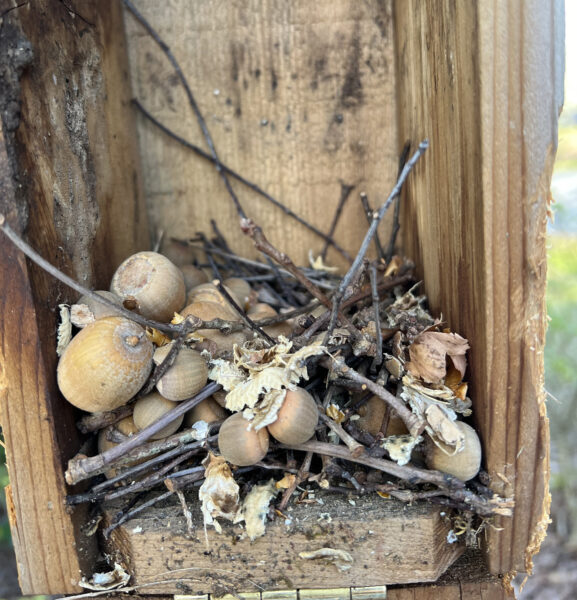
Later the same year, a Cope’s gray tree frog found a safe and shady place to spend its days in the same birdhouse!
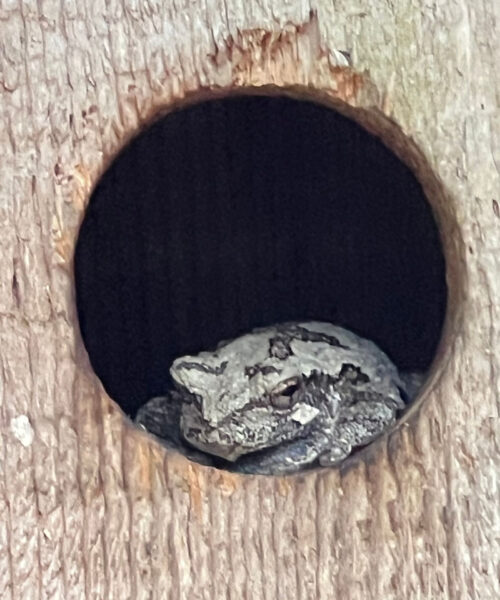
Brush piles and rock piles can also provide great shelter for many animals and mimic natural habitat features. You can also construct habitat towers that do a great job of providing habitat for a variety of small wildlife—just ask this young eastern rat snake!
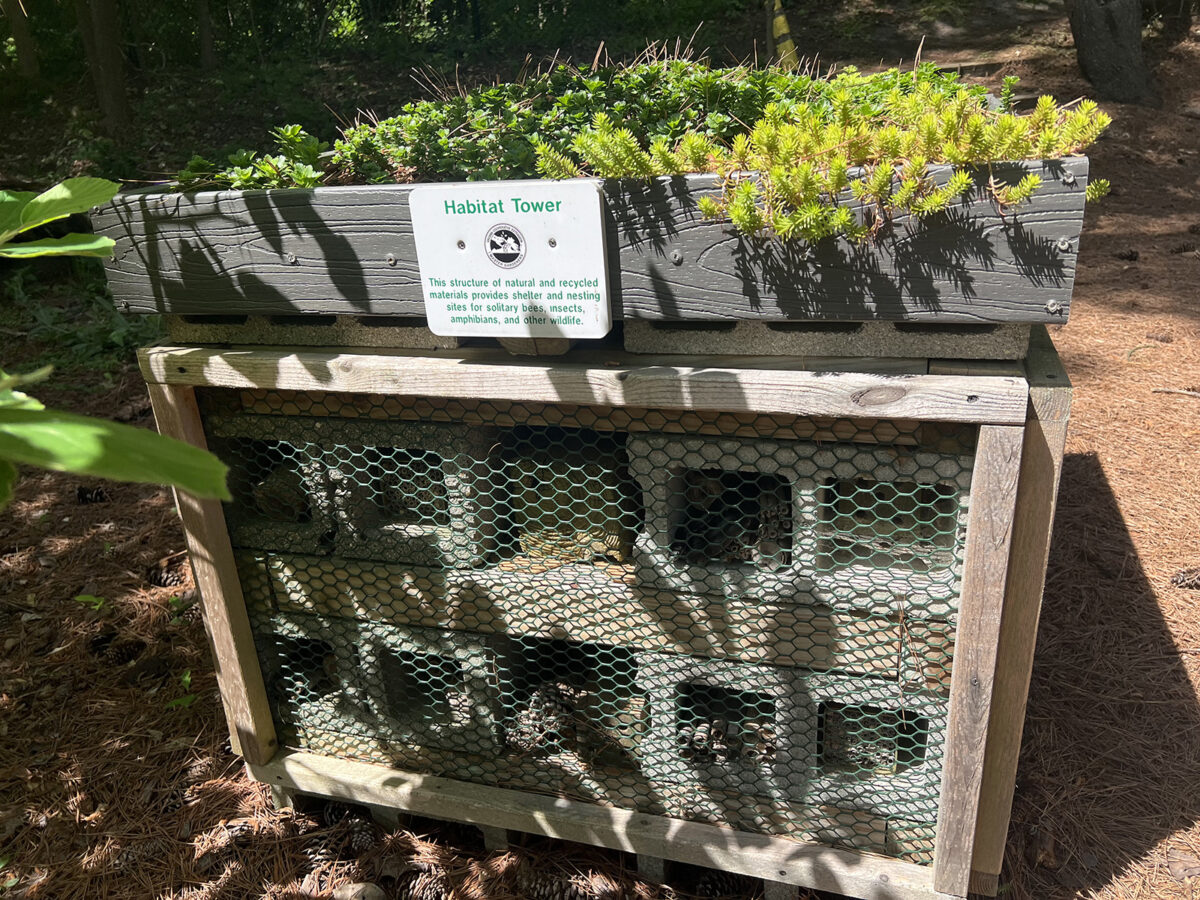
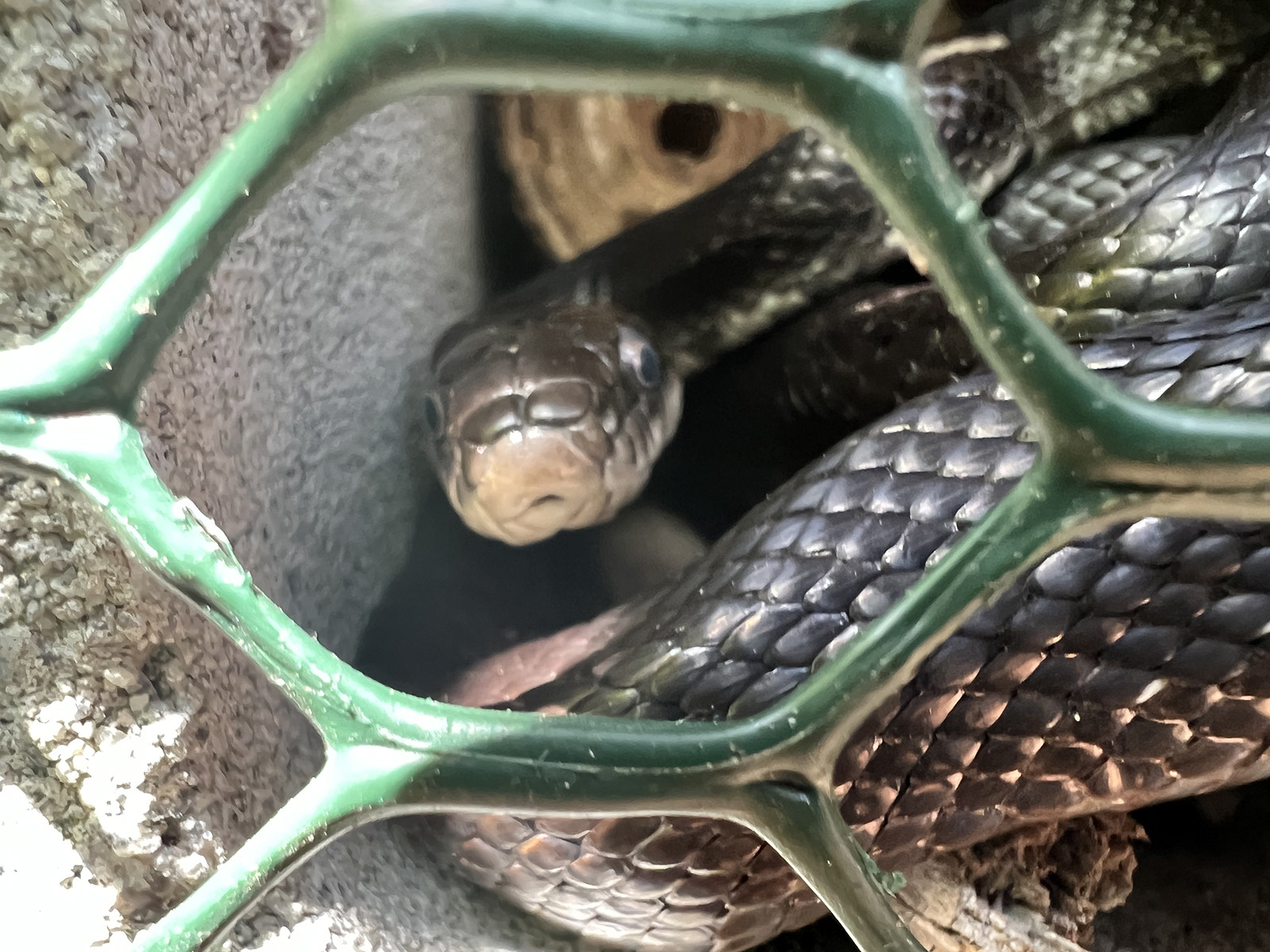 We know that water is important in some form for all life, but for some species it is necessary basic cover. Some animals, like fish, spend all their time in the water, but others, such as amphibians and some insects like dragonflies, water provides a place to lay eggs and for young to develop. Backyard water features that are deep enough also provide a place for aquatic creatures to escape winter’s bite and can incorporate native plants that make them even more attractive for wildlife.
We know that water is important in some form for all life, but for some species it is necessary basic cover. Some animals, like fish, spend all their time in the water, but others, such as amphibians and some insects like dragonflies, water provides a place to lay eggs and for young to develop. Backyard water features that are deep enough also provide a place for aquatic creatures to escape winter’s bite and can incorporate native plants that make them even more attractive for wildlife.
Location, location, location: How shelter is arranged is an important part of managing your Habitat at Home. Some wildlife are shy and won’t use habitats too close to a house. Nest boxes placed in the middle of a lawn are exposed to baking sun and driving winds and an easy target for predators. Brush piles close to a foundation may encourage wildlife to explore to inside of your habitat!
Read also:
What is Habitat? Space is Relative for Wildlife
Stephen Living, the DWR habitat education coordinator, is a biologist and naturalist with a lifelong love of wildlife and nature that began in the woods and streams of his childhood.


